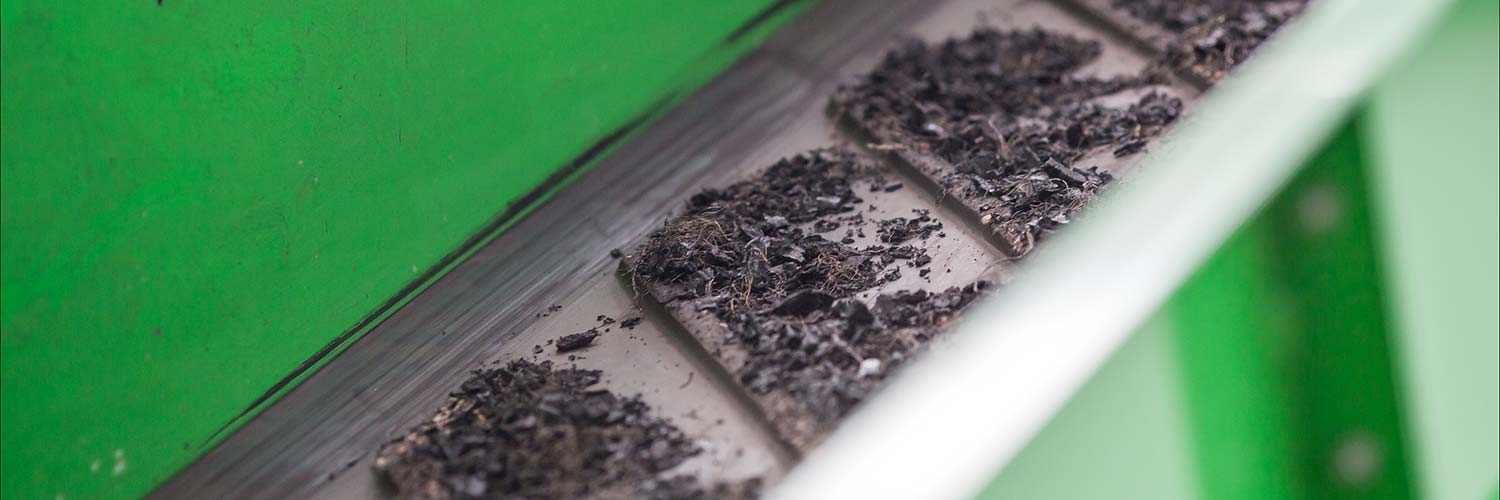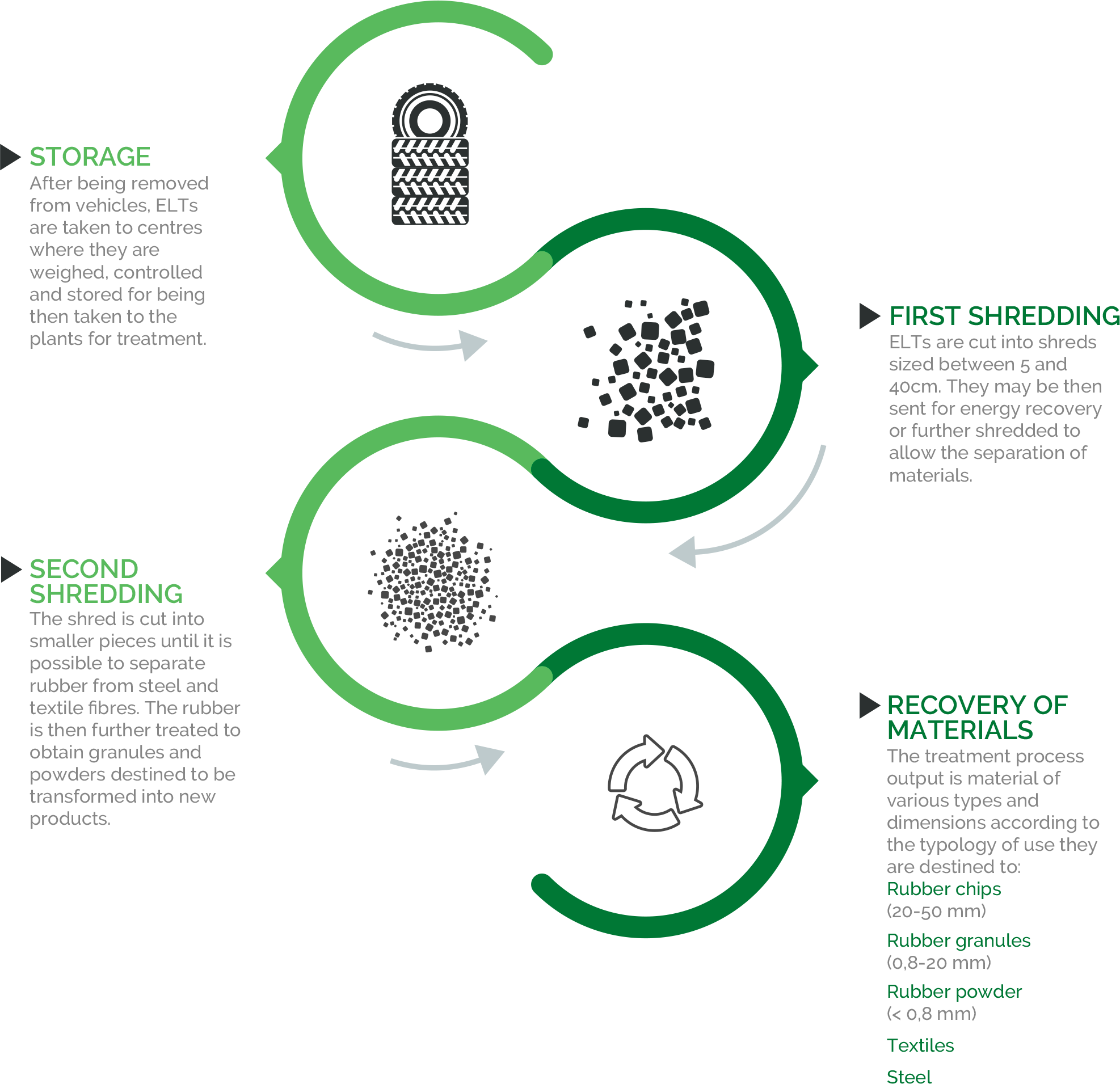
When a tyre is no longer sufficiently safe or efficient to be reused, even if retreaded, it is termed an “end-of-life tyre” – that is, waste – and must be collected and recovered in specific plants. The rubber the tyre is made of is, indeed, a mix of very high quality polymers with exceptional chemical-physical characteristics, which remain unaltered even in the recycled rubber obtained from it.
ELTs may be channelled towards one of two different processes: recycling, whence new materials such as rubber, steel and textile fibres are obtained, or recovered as energy in ad hocplants, mainly cement factories. Indeed, ELTs have the same calorific power as coal, but with much lower climate-changing emissions.
For material recycling, ELTs are sent to specific plants. By the means of mechanical shredding at room temperature these plants reduce ELTs in smaller and smaller pieces, until the separation of the three tyre components, rubber, steel and textile fibre, is achieved.
The treatment process of End-of-Life Tyres

ELT recycling is like a piece of precision machinery! Watch the animation film about how an End-of-Life Tyre is transformed into precious recycled rubber.
Innovative eco-sustainable products are made with recycled rubber from ELTs. These products find their application in a wide range of sectors.
From the products for the building industry, such as acoustic insulation and anti-vibration elements, to sport, with playgrounds, football pitches, and multi-purpose sports flooring. There is also the sector of roads and infrastructures where, next to silent and long lasting “modified” asphalts, we can find cycle lanes, street furniture and items for road safety. Animal wellbeing, design, objects and new compounds made combining recycled rubber and thermoplastic materials complete the range of products available.
To get to know them all, visit the new Catalogue of the Products in recycled tyres from End-of-Life tyres promoted by Ecopneus and made by MATREC.

 Collect ELT
Collect ELT